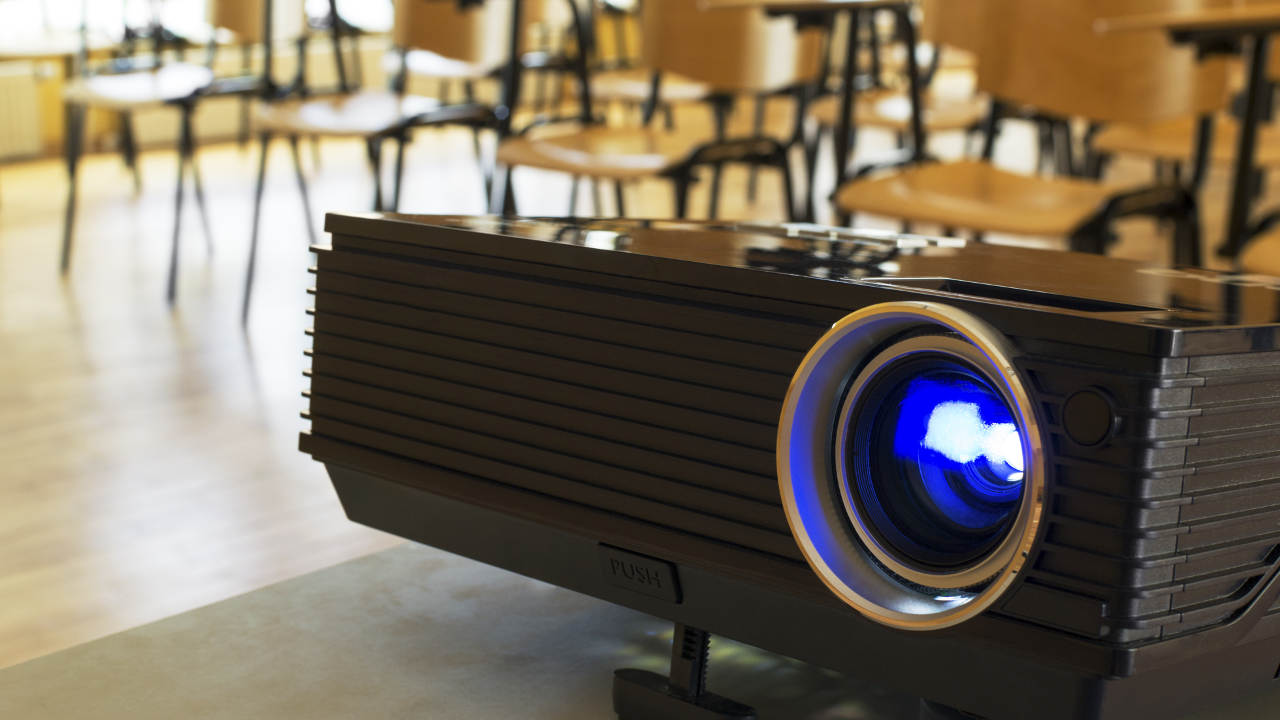Upgrade Anxiety, Solved!
The world of projection tech is always on the move — and your district’s fleet of AV gear is fast approaching its expiration date. The question is no longer if they need replacement but when and how much will it cost. Don’t worry, Tech&Learning is here for you with expert advice on creating an upgrade strategy.

From interactive projectors and collaborative tools, to incredibly intense 4K clarity, advances in the projector arena have changed the game. One factor that remains high on administrator and decision-maker’s minds is navigating both eco and budget concerns. One of the biggest changes on the scene is the popularity of lamp-free options.
By combining a laser and LED light source to create a high-brightness, mercury-free tool, hybrid lamp-free tech uses up to half the amount of power per unit than other lamp-based projectors and extends the operating life up to 20,000 hours. One big budget concern is ongoing maintenance costs. Not only do these projector options nix the need to buy additional replacement lamps, they also eliminate the costly process of replacing lamps — time needed for ordering, shipping costs, blocking time in the classroom for installation, man hours with an experienced installer. These costs all add up.
These “soft” costs can add up to 20% to the bill. To reach a true bottom line, it important to compare not just the price but the Total Cost of Ownership (TCO). Luckily, finding the TCO isn’t complicated, in fact most websites offer TCO Calculators to compare products by simply plugging in a few data points like daily/annual usage, energy cost and filter cleaning or lamp replacement costs (including labor and time resources).
When rebuilding your AV tech game, it is also important to future-proof your pick to ensure a long and useful life. Sustainability and social responsibility are good elements to keep in mind. Making sure environmental and social standards are met to the highest level is easy. Simply opt for a TCO 2.0 certified projector awarded by an independent nonprofit (currently a number of Casio and Epson projectors made the cut). The list goes beyond avoiding companies practicing poor labor and eco-policies, the additional requirement for TCO certification is for the product to offer excellent image quality up to a specific maximum projected image size. The product also requires an Eco Mode — this means that the projector can be set to a lower light intensity. Reducing the energy consumption and noise level increases the lifespan of the lamp therefore adding to value.
Projector companies realize schools have budgets and district financial committees to satisfy. Many have education customer-specific programs to help both the bottom line and to add extra value for those looking to enhance their classrooms. Casio offers a special website and extensive collection of support materials for teachers and students, with worksheets, activities, instructional videos and support software to help educators create lesson plans and projects. Casio’s Loaner Program enables educators to test drive classroom products. The program provides a hands-on evaluation of educational products and is free of charge. A rewards program also offers educators the opportunity to earn free product. ViewSonic’s Learn & Grow program provides special pricing on up to five units of selected products to allow schools to evaluate the new technologies before deciding on large-scale installments. Teachers can also take advantage of Friends and Family pricing on items for personal use. Epson’s Brighter Futures Program includes competitive pricing only available to education clients, three year limited warranty (90 days for lamps), free next day business replacement with free shipping both ways, PrivateLine free tech support for life of warranty and a dedicated account manager.
Tools and ideas to transform education. Sign up below.
Sascha has nearly two decades of experience as a freelance journalist writing for national magazines, including The Washington Post, LA Times, Christian Science Monitor, National Geographic Traveler, and others. She writes about education, travel and culinary topics.

